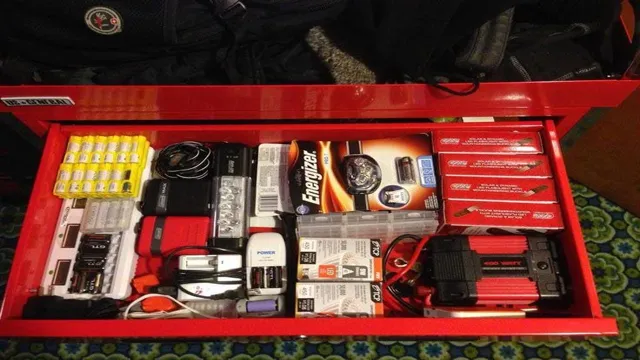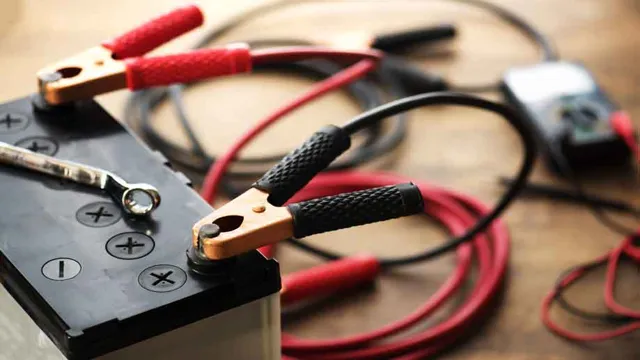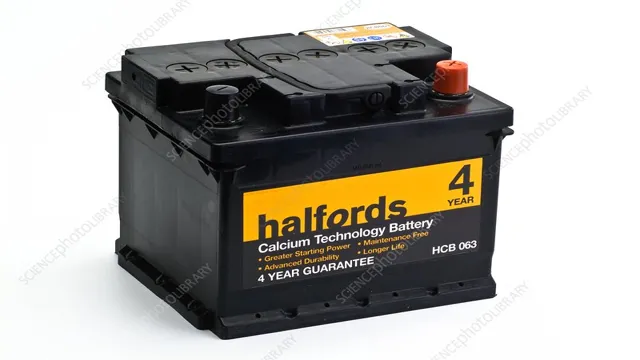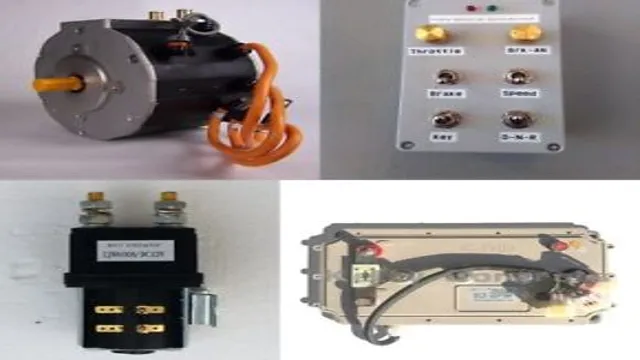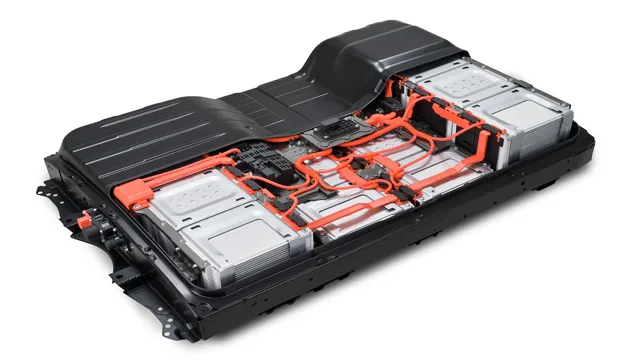Rev Up Your Savings: Create a DIY Battery Bank with Used Electric Car Batteries
Are you looking for an affordable yet high-capacity option for powering your off-grid cabin, RV, or tiny house? Look no further than DIY battery banks made with used electric car batteries. With electric vehicles becoming more popular, more and more batteries are reaching the end of their useful lives, making them available for reuse in alternative energy systems. By repurposing these powerful batteries, you can create a battery bank capable of storing large amounts of energy, helping you reduce your reliance on traditional power sources.
Plus, it’s a sustainable and environmentally friendly way to power your home. But how do you build a DIY battery bank with used electric car batteries? Don’t worry, we’ve got you covered. In this blog post, we’ll walk you through the process step-by-step, from sourcing the batteries and assessing their condition to designing and building your own battery bank.
With a little know-how and some elbow grease, you can have a reliable and cost-effective battery bank up and running in no time. So, let’s get started!
Why Choose Used Electric Car Batteries?
If you’re looking for an affordable and environmentally-friendly solution to power your off-the-grid cabin, RV, or tiny home, consider building a DIY battery bank with used electric car batteries. Not only is it much cheaper than buying new batteries, but it also helps to extend the lifespan of the batteries and reduce e-waste. Electric car batteries typically have a 70-80% capacity after 10 years of use, which is still more than sufficient for many off-grid applications.
By giving them a second life in your battery bank, you’re not only saving money but also contributing to a more sustainable future. Plus, with the right tools and knowledge, building a DIY battery bank with used electric car batteries can be a fun and educative project. So why not give it a try and see the benefits for yourself?
Cost-effective and Eco-friendly
Used electric car batteries are becoming more popular among consumers looking for cost-effective and eco-friendly solutions. These batteries are cheaper than new ones, making them a great choice for those on a budget. Additionally, reusing old batteries means that fewer resources are consumed in the production of new ones, reducing the environmental impact of manufacturing.
Used electric car batteries can also be repurposed for residential or commercial energy storage applications, providing a sustainable solution for communities looking to reduce their reliance on fossil fuels. Choosing used electric car batteries not only saves money but also helps to protect the planet, making it a win-win solution. So why not give them a try?

High Capacity and Longevity
Used electric car batteries are becoming a popular option for those seeking cost-effective and sustainable energy solutions. These batteries have a high capacity and longevity to handle a wide range of applications. By utilizing the existing technology, these batteries can provide a sustainable power source for electric vehicles, homes, and businesses.
The benefit of using used electric car batteries is that they are both cost-effective and eco-friendly. With advancements in battery technology, used batteries can last longer and maintain their capacity, making them a smart choice for those looking to reduce their carbon footprint while saving money. Additionally, the reuse of batteries decreases the demand for new battery production, thus helping to reduce environmental impact.
So, why choose used electric car batteries? Not only do they offer high capacity and longevity, but they also promote sustainability and affordability. It’s a win-win situation for both your wallet and the planet.
Step-by-Step Guide to Building a Battery Bank
If you’re looking for a cost-efficient way to store energy at home, building a DIY battery bank with used electric car batteries can be a great option. To start, you’ll need a few basic materials, including a battery charger, a battery management system, and interconnecting wires. Then, you’ll need to source your used electric car batteries from a reputable supplier.
Once you have all the components and batteries ready, you can start building your battery bank. The process involves connecting the batteries in series or parallel, depending on your desired voltage and capacity. It’s important to ensure that the batteries are well-balanced and that the connections are tight and secure.
Once your battery bank is complete, you can test it to ensure it’s working properly and safely. With a DIY battery bank, you can store energy from solar panels or wind turbines and use it to power your home, reduce your energy bills, and increase your energy independence. Plus, by repurposing used electric car batteries, you’re also contributing to a more sustainable and circular economy.
So why not give it a try?
Choose the Right Battery Type and Capacity
When building a battery bank, it’s essential to choose the right battery type and capacity to ensure optimal performance and longevity. The two main types of batteries commonly used for battery banks are lead-acid and lithium-ion batteries. Lead-acid batteries are more affordable, but they have a shorter lifespan and lower energy density than lithium-ion batteries.
Lithium-ion batteries, on the other hand, are more expensive but have a much longer lifespan, higher energy density, and are more lightweight. Capacity is equally important when selecting batteries for your battery bank. The battery’s capacity is the amount of energy it can hold and supply, and it’s measured in Ampere-hour (Ah).
It’s vital to choose a battery with a capacity that is sufficient for your energy needs. Choosing the right combination of battery type and capacity for your battery bank can make all the difference in how effectively and efficiently your system runs.
Design the System and Calculate Power Needs
Building a battery bank requires careful planning and design to ensure that it meets your needs and is reliable. The first step is to determine your power needs by calculating how much energy you will use per day and how long you want the battery bank to last before recharging. This will help you choose the right battery size, type, and number for your specific application.
Additionally, you’ll need to design the system layout and choose the appropriate charge controller and inverter for your battery bank. The charge controller regulates the amount of power going to the battery bank, preventing overcharging and damage to the batteries. The inverter is responsible for converting the DC power from the battery bank into AC power for your devices.
With proper design, you can ensure that your battery bank is reliable and efficient, providing power when you need it most. So, if you’re looking to build a battery bank, it’s essential to take the time to plan and design the system carefully to meet your specific power needs.
Connect the Batteries and Install the Inverter
If you’re looking to build a battery bank, one of the most important steps is to connect the batteries and install the inverter. This can be a daunting task for beginners, but with a little patience and know-how, it’s not as difficult as it may seem. The first step is to make sure the batteries are all of the same type and capacity, which will help ensure even charging and discharging.
Once you have your batteries, use thick gauge cables to connect them together in parallel or series. Make sure to connect the negative to the negative and the positive to the positive. Next, connect the inverter to the batteries, and make sure it’s properly grounded to prevent electrical shock or fire hazards.
Test the system by turning on a small appliance and make sure it’s running off the battery power. With these simple steps, you’ll be well on your way to enjoying reliable, renewable energy from your battery bank.
Tips for Maintaining and Expanding Your Battery Bank
If you’re looking to create a DIY battery bank with used electric car batteries, there are a few things you can do to ensure that your system operates at peak efficiency. Firstly, it’s important to regularly maintain your batteries by checking their voltage levels, cleaning their terminals and ensuring they are properly charged. Maintaining and replacing defective cells can also help extend the lifespan of your battery bank.
When it comes to expanding your battery bank, think about adding more batteries in parallel rather than in series to maintain a steady voltage and ensure that all cells are evenly charged. Additionally, consider investing in a quality battery management system to monitor your system’s performance and prevent overcharging or undercharging. With proper maintenance and expansion, your DIY battery bank can provide reliable and sustainable power for years to come.
Regular Inspections and Testing
Regular inspections and testing are crucial for maintaining an efficient battery bank. Firstly, you should inspect the batteries regularly to check for any signs of damage, corrosion, or leakage. It’s also essential to keep the batteries clean, making sure there is no dirt or debris that can interfere with their performance.
Secondly, ensure you carry out regular testing to detect any faults before they can cause serious problems. Testing can be done by checking the voltage levels, an essential aspect of battery health. Ensuring you maintain and expand your battery banks can help prevent unexpected power outages and keep your system running smoothly for an extended period.
Remember, investing in quality batteries will also go a long way in ensuring an efficient battery bank.
Balancing the Batteries and Replacing Faulty Cells
Maintaining and expanding your battery bank is crucial for ensuring uninterrupted power supply, especially in off-grid systems. One important aspect of battery maintenance is balancing the cells to maintain equal charge and discharge levels. Failure to do so can result in overcharging and undercharging of specific cells, causing damage and reducing the overall lifespan of the battery bank.
Regularly monitoring the voltage of individual cells and adjusting charging levels to equalize them can help prevent this. Additionally, identifying and replacing any faulty cells can prevent them from causing further harm to the rest of the battery bank. Like a chain, the strength of a battery bank is only as good as its weakest link.
Properly maintaining and expanding your battery bank can keep your power supply going strong for years to come. So, take the time to perform regular maintenance and inspections, and don’t hesitate to replace any faulty cells to keep your batteries running at their best!
Conclusion: DIY Battery Bank Made Easy
In conclusion, creating a DIY battery bank with used electric car batteries is a smart and sustainable way to power your home or off-grid project. Not only is it cost-effective, but it also helps reduce waste and extends the lifespan of these already impressive batteries. So go ahead, give your old electric car batteries a second life and power up your life with some DIY ingenuity!”
FAQs
What are the benefits of using used electric car batteries to make a DIY battery bank?
One key benefit is that it is a cost-effective way to acquire high-quality batteries capable of storing a lot of energy. Additionally, it promotes recycling and reusing materials that would otherwise go to waste.
What are the safety precautions that should be taken when working with used electric car batteries?
It is important to wear protective gear such as gloves and eye protection, as well as to ensure that the batteries are properly insulated and isolated from each other to prevent potential short circuits. It is also recommended to work in a well-ventilated area to avoid inhaling harmful gases.
How can I determine the state of health of a used electric car battery before using it in a DIY battery bank?
One way to assess battery health is to measure its voltage and compare it to the manufacturer’s specifications. It is also recommended to perform capacity tests to determine how much energy the battery can store and discharge, as well as to look for signs of physical damage or degradation.
Can I use different types of used electric car batteries in the same DIY battery bank?
While it is possible to mix and match different types of batteries, it is generally not recommended as it can lead to imbalances in the charging and discharging of the batteries, which can reduce their lifespan and overall efficiency. It is best to stick to using batteries of the same type, capacity, and age.
